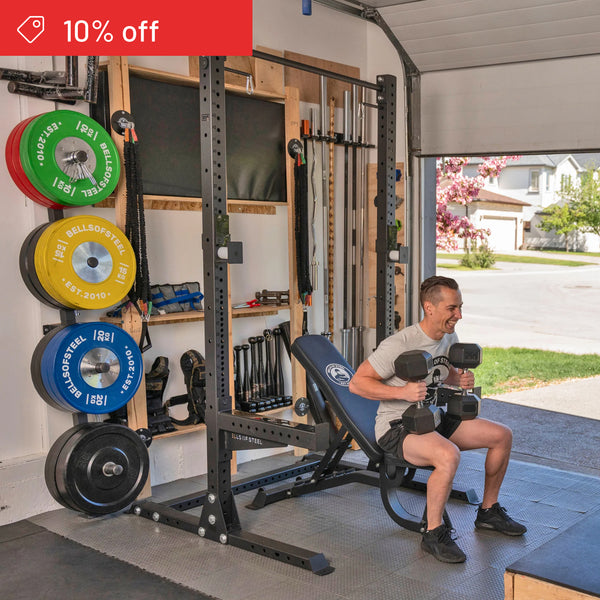Picture this: you're crushing it at the gym, moving serious weight, and feeling unstoppable. Then, out of nowhere, your elbows start to complain louder than a hungry toddler.
Enter elbow sleeves—the unsung heroes of the lifting world.
But what exactly are they, why do lifters use them, and when should you consider donning these snug, supportive wonders? Let’s dive in and find out.
What Are Elbow Sleeves?
Elbow sleeves are tight, supportive garments made from materials like neoprene that you wear over your elbows. Think of them as a warm, comforting hug for your joints, but without the awkward small talk.
These sleeves are designed to provide compression, support, and warmth to your elbows during workouts. They come in various thicknesses and lengths, catering to different needs and preferences.
Why Do Lifters Use Elbow Sleeves?
Lifters use elbow sleeves for a variety of reasons. First and foremost, they offer compression, which increases blood flow and reduces inflammation. This can be a game-changer if you’re dealing with nagging elbow pain or discomfort. Of course, always consult with your doctor if you have any underlying issues.
Elbow sleeves also provide additional support, helping to stabilize the joint during heavy lifts. This can be particularly beneficial for exercises that put a lot of strain on the elbows, such as bench presses, overhead presses, and skull crushers.
Moreover, elbow sleeves keep the joints warm, which can prevent injuries and improve overall performance. Warm joints are happy joints, and happy joints mean more effective and safer workouts.
Lastly, elbow sleeves can give you a psychological boost. Knowing that your elbows are supported can give you the confidence to push harder and lift heavier.
Benefits of Elbow Sleeves
The benefits of elbow sleeves extend beyond just pain relief and support. They can also enhance your lifting performance by improving proprioception—your body's ability to sense its position and movement. Better proprioception can lead to better form and technique, reducing the risk of injury.
Elbow sleeves also help with recovery. By reducing inflammation and promoting blood flow, they can speed up the healing process after intense workouts. This means less downtime and more time hitting the weights.
When to Start Using Elbow Sleeves
Deciding when to start using elbow sleeves depends on a few factors. If you’re experiencing elbow pain or discomfort during or after your workouts, it might be time to give them a try.
Similarly, if you’re lifting heavy weights or training intensely and frequently, elbow sleeves can provide the support you need to keep your joints healthy.
Even if you’re not currently dealing with pain, you might consider using elbow sleeves as a preventive measure. They can help protect your elbows from the wear and tear of heavy lifting, especially as you start to increase the intensity and volume of your training.
How to Choose Elbow Sleeves
When choosing elbow sleeves, consider the level of support and compression you need.
Thicker sleeves (5mm or 7mm) offer more support and are ideal for heavy lifting and powerlifting. Thinner sleeves (3mm) are more versatile and can be used for a variety of activities, including MetCon and general gym workouts.
Ensure the fit is snug but not overly tight, as you want them to be comfortable and effective without cutting off your circulation.
If you’re competing, be sure to check the federation guidelines on elbow sleeve use and thickness.
Summary
Elbow sleeves are a valuable tool for lifters, providing compression, support, and warmth to the elbows. They help reduce pain and inflammation, improve performance, and speed up recovery.
Consider using them if you’re experiencing elbow pain, lifting heavy weights, or simply want to protect your joints from future issues. Choose the right thickness and fit based on your needs and enjoy the benefits of happy, healthy elbows.
- Compression and support: Increases blood flow and reduces inflammation.
- Warmth: Keeps joints warm, preventing injuries.
- Improved performance: Enhances proprioception and technique.
- Recovery aid: Speeds up the healing process after workouts.
- When to use: During heavy lifting, intense training, or if experiencing pain.
- Choosing the right fit: Consider thickness and snugness for optimal comfort and effectiveness.
Now flex, lift, and get those gainz in comfort. 💪



